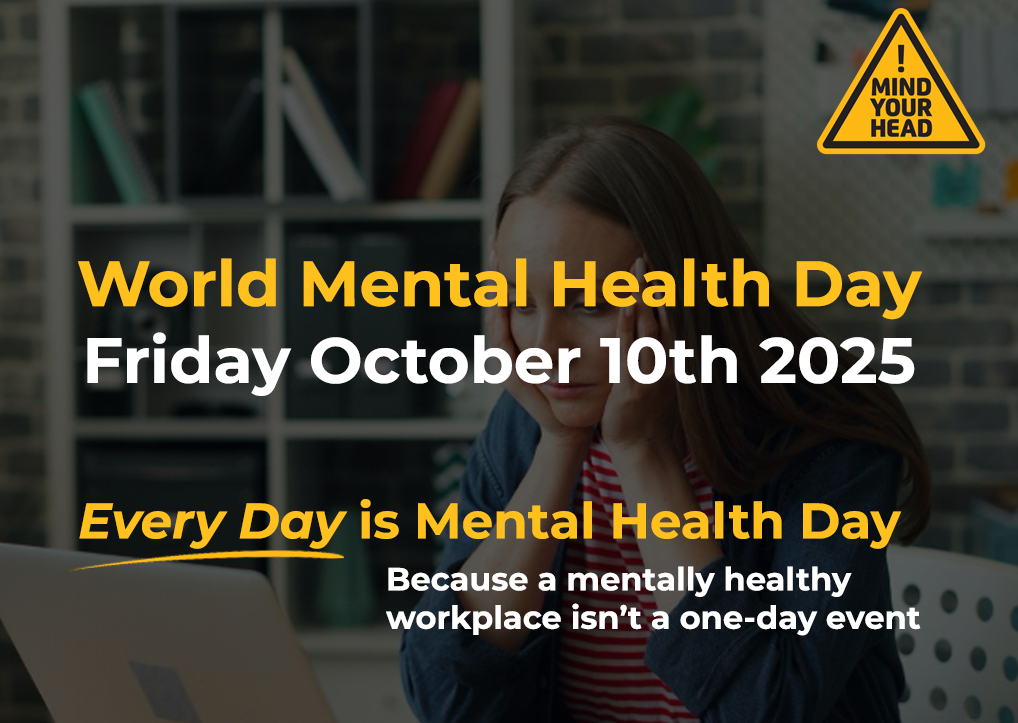Friday October 10th, 2025
This World Mental Health Day (10th October) is a reminder that protecting mental health at work isn’t just a personal responsibility — it’s a collective one and most importantly it is an employer’s legal obligation.
A mentally healthy workplace takes positive steps to prevent harm by identifying, eliminating and managing mental health hazards, in consultation with workers. It is also about assisting workers and supporting their recovery, just like we would with physical hazards at work. Under the WHS Act (or the OHS Act in Victoria), employers must provide and maintain a working environment for their people that is safe and without risks to mental health.

Across Australia, unions have led the charge to make mental health a workplace priority. From addressing psychosocial hazards and excessive workload to securing stronger laws and consultation rights, collective action is reshaping how employers protect psychological wellbeing at work. These efforts have already led to major changes that are improving mental health outcomes for workers across the country.
The Right to Disconnect
Workers now have the legal right to switch off from calls, emails and messages outside work hours, unless the contact is reasonable or urgent. This landmark reform, secured through union advocacy under the Closing Loopholes campaign, helps prevent overwork, stress and burnout.
From 26 August 2025, employees in small businesses (fewer than 15 staff) have a right to disconnect. That means they have the right not to answer work calls, emails, or messages outside your hours—unless it’s reasonable or urgent. This is a big step for workplace mental health and work–life balance, giving workers in small businesses the same right as those in larger businesses.
Secure Jobs and Workload Protections
Through the Secure Jobs, Better Pay Act and collective bargaining, we have won stronger job security and workload management provisions, tackling the chronic stress caused by precarious and overloaded work.
Respect@Work and Gendered Violence Reforms
Campaigning has also helped secure new laws requiring employers to take proactive steps to prevent sexual harassment and gendered violence at work, recognising that psychological safety is integral to mental health.
Psychosocial Hazards Recognised in WHS Laws
Unions fought to have psychosocial hazards like bullying, job insecurity, and excessive workload treated like any other workplace hazard. Employers are now required to identify, assess and control these risks — a major step in addressing mental health at its source.
That advocacy has led to the introduction of Psychosocial Hazard Regulations, such as Safe Work Australia Model Code of Practice: Managing Psychosocial Hazards at Work, and The Commonwealth Work Health and Safety (Managing Psychosocial Hazards at Work) Code of Practice, which outlines 17 recognised hazards. Learn more about them here.
Why burnout is rising in Australian Workplaces—and how to protect your mental health

As we move into the final quarter of 2025, many Australian workers are entering what is often the toughest stretch of the year. Deadlines loom, projects conclude, budgets tighten, and fatigue from months of relentless pace can tip into serious burnout, especially for those carefully preserving their annual leave for the holiday period.
Recent findings from the Corporate Mental Health Alliance Australia (CMHAA) paints a clear picture: burnout is prevalent, performance is suffering, and recognising the signs early is more important than ever.
Key factors that predict burnout include:
- Low control over work – when employees feel they can’t influence the tasks, deadlines or how work is executed.
- Work changes – whether through organisational restructuring, shifting expectations, or frequent changes in role or process.
- Emotional and mental load – the hidden burden of emotional demands from clients, customers, or even colleagues; maintaining high mental output without buffer.
When Workplace Change Becomes a Mental Health Risk
Poor Organisational Change Management
What is it? When changes in the workplace—such as restructures, redundancies, mergers, technology upgrades, or process overhauls—are handled without clear planning, communication, or importantly, worker consultation.
What are the impacts? When change is not well-managed, it can create high levels of uncertainty, fear, and instability. It can increase already significant workloads. Workers may feel powerless, unsupported, and worried about job security or their ability to meet new expectations. This can lead to stress, anxiety and burnout, low morale, increased conflict and turnover at work, and reduced productivity.
How do we address it? Employers have a duty to manage organisational change like any other workplace hazard — proactively and in consultation with workers. Good practice includes planning ahead, clear and timely communication, consultation and participation, support and training, and effective monitoring and reviews.
DOWNLOAD THE COMPLETE FACT SHEET HERE
The Mind Your Head initiative continues to equip you with the tools to identify psychosocial hazards, consult, and take preventative action — building safer, more supportive workplaces.
Need help with a hazard or workplace issue? Contact your Union
